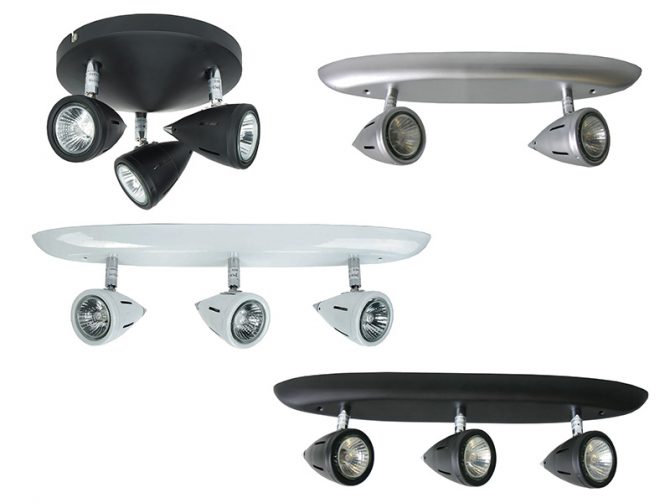
LEDs are a luminous technology that works by means of electroluminescence, a property possessed by certain materials that cause them to emit light when they are crossed by an electric current.
The mechanism of the LEDs was first discovered in 1907 by the British electrical engineer H.J. Round who while experimenting with ancient glass radios discovered that silicon carbide crystals emitted light by applying a certain voltage. No real progress with this technology took place until 1955, when Rubin Braunstein reported that certain diodes emit light in an infrared spectrum when a current passes through them. The first LED that emitted visible light was created in 1962 and produced red light. As of that moment, the technology began to advance to giant steps and a unit happened to cost 200 dollars in 1968 to cost 0,5 dollars in the years 70, thanks to the improvements of the manufacturing processes.
Today the LED industry has reached enormous proportions and is expected to grow to reach $ 30.5 billion dollars in 2016. LEDs are used in a multitude of objects, from in the backlight of LCD TVs to lanterns, and have even become part of the home lighting, where they have started to move fluorescent lamps. The White House Christmas tree is illuminated with LED lights, as is the Rockefeller Center tree in New York. Even the streets are being lit with smart LEDs, with streetlights equipped with a series of sensors that gather information to prevent crime, control traffic and much more.
Here in Australia you will find a top provider of lighting solutions with a wide range of imported lighting products. Select Lighting is your leading option to purchase LEDs in Australia.
Let’s take a look at why LEDs have come to be used suddenly and in a widespread way in today’s Christmas lighting and lighting solutions in general. We break down the 5 reasons that explain why there are better options than incandescent bulbs, not only in decorative lights but also in other applications.
- LEDs save energy
We start with the issue of energy savings: LEDs use at least 75% less energy than equivalent incandescent bulbs. An invoice of $ 2.74 for the lighting of a Christmas tree during the holidays with tiny incandescent bulbs comes to be only $ 0.82 if it is lit up with similar LED lights.
This saving is also applicable to the LEDs that light up the house. Acquiring LED lights to replace incandescent bulbs will decrease the amount of light receipt. LEDs are also more efficient than fluorescent lights, and are therefore a practical option.
- LEDs are more secure
A direct result of the saving in consumption of 75% of the LEDs is a decrease in the emission of heat if we compare them with other light technologies. The larger incandescent bulbs can reach high temperatures and burn the skin if touched, while the LEDs remain relatively cool to the touch even after long periods of use. This makes LEDs much safer than incandescent lights, since they can stay on no matter how long they are needed.
And the most important thing is that since the LEDs are colder, the risk of fire is less. Although this is relatively rare, the heat produced by larger incandescent bulbs can reach a point of combustion and burn leaves or fabrics that are close to them.
- LEDs are durable
Incandescent bulbs are composed of fine filaments of tungsten through which the current passes,
and an evacuated glass ampoule. These two fragile components contribute to the overall fragility of incandescent bulbs – even a slight impact can break the glass, while a sudden shake or a strong vibration can break the filament. Christmas lights lovers understand what the accidental breakage of small incandescent light bulbs when placing them on a wall or chain them, even when saving them there is a risk that they break with just moving them.
On the other hand, LED bulbs are coated with epoxy resin that is more resistant than glass, and the same LED assembly is a relatively robust solid-state semiconductor. This composition makes LEDs less prone to breakage, more resistant to movement and vibration shaking and, in general, more durable
In addition, LEDs are not susceptible to extreme low temperatures, and will work in them in the same way as at room temperature. This makes them an ideal decoration for outdoor, especially in winter.
- LEDs last longer
Even if we do not consider the durability of their materials, LEDs have a much longer lifespan than incandescent bulbs – in fact, they last 25 times longer. The average life of an incandescent bulb is approximately 1,000 hours. While LEDs can last up to 25,000 hours, at which point their lighting potential decreases by 70%.
LED lights are generally more expensive than incandescent lights and therefore have a higher initial cost. However, this investment is amortised over time by greatly reducing the need to replace the bulbs, as these are soon melted and must be replaced, while the LEDs are still shining.
- LEDs can be installed more easily
Domestic outlets have an amperage limit that represents the maximum current that can pass through them. Most power outlets are 15 to 20 amps, and for the current circuit breaker to fail, you must use 80% of its capacity for extended periods of time. Of course, that can be solved using a multiple connector, since the important thing is how much electricity comes out of the outlet.
High standards
With the increased use of LEDs, it is essential that they meet the strictest international standards for testing and regulations. Here at Select Lighting we take pride in working only with top manufacturers around the world that have many years of experience in the field of lighting solutions. Visit our online store and order LED lights that will easily cover your needs and help you achieve smart consumption of resources.